If you decide to robbing rabbits, first of all you will need to equip the home for animals. In addition, the cells must be warm, clean and cozy, they should also equip suitable drinkers and feeders. In this article we will tell about the nursery for rabbits, their varieties, features and ways to create similar designs with their own hands.
Why need nursery
In the event that you hold the houses of a small decorative rabbit, you can use anything as a feeder, for example, a small bowl. But if you divor rather large animals and their livestock has a decent number of individuals, then without high-quality nurser, you can not do. Let's figure out what is the advantages of using such structures:
- Rabbits will always know where food is located, they will be accustomed in the same place.
- Nursery is made in such a way that the animals do not have the opportunity to dig in them and scatter food around themselves. Firstly, this ensures the purity of the cell, and secondly, the rabbits are not chosen from the feeders the most delicious, but eat everything in a row. So their nutrition is balanced.
- To get a hay of a nursery through the prodes of the cell, your pets will have to make some effort. Because of this, the process of absorption is slower, which contributes to better digestion.
- In the event that there are several individuals in the dwelling, they all have equal access to the stern. When the hay fell into a bunch, the strongest and large rabbit climbs on it, drivening out other fellow fellow. With nurseries this does not happen, each animal can easily eat.
Requirements for feedushke
It must be said that feeding animals with wet food is quite uncomfortable. Such food is always poured into separate containers and every time the rabbits go, the dishes need to collect and wash. Not all owners have time and desire to do this, so many prefer to equip a dwelling for rabbits with bunker feeders for granulated mixtures and nursery for the hay.
Bunker structures are very convenient to use. First, animals do not have the ability to scatter food. Secondly, food is fed to the tray gradually, there is no need to have a frequently to be sick in the feeder. In addition, such structures are easy to remove and clean if necessary.
Among the basic requirements for feeders for rabbits, the following can be distinguished:
- The cell equipment must comply with hygienic requirements and be easy to care.
- Food must be protected from external contaminants.
- Material for the construction of structures should be chosen such that the rabbits could not spit it. For this reason, wood and plastic use is not recommended, but thin sheets of metal will be quite suitable: tin, stainless steel, aluminum, etc.
- Construction feeder made of metal elements, secure its safety for animals. Make sure that all sharp corners and edges are embedded and have no danger to the health of your pets.
Types of nursery
Each animal cage should be equipped with troughs, in which dry hay, straw and fresh grass will be supplied. Nursery for rabbits are 4 species: exterior, internal, bilateral and V-shaped. Let's consider in more detail each of the options:
- Outdoor nurseries are often attached to the side of the cell where the feed compartment is located. The feeder itself has the appearance of the box, the bottom and 3 walls of which are shaved from the tree or from the metal sheet, and one wall is made of a large-scale grid. The top of the yoke can have a cover on hinge or be completely open. The choice of option depends on where the cell is located: indoors or outdoor. In the event that it is located on the front wall of the rabbit housing, the feeder can be fixed on the other hand. To do this, the cell is done in the wood of the cell, which is closed by a grid. Then the nursery is suspended with this window.
- Internal feeders are used in the event that for some reason it does not work out the design outside. The appearance in such a nursery is exactly the same as in the outer, but they are only fixed on the reverse side of the cell and it is somewhat more complicated.
- A double-sided feeder is usually fixed in the hole on the rear wall of the cell. One side of this design is outside, the owner periodically adds food for rabbits. The second half of the yoke is located from the inside, it has a kind of a large-scale mesh or lattice, through which the animals take themselves hay or grass.
- V-shaped structures are advisable to apply in dual rabbit cells. Nurserie of this type have two beveled walls and it resembles the Latin letter "V", from here and their name occurs.
How to make a nursery for rabbits do it yourself
Creating a feeder with their own hands will not require much time and money from you, but will save money to buy such a design. As mentioned earlier, it is better not to use a tree or plastic as a material for a nursery, preferred metal. The easiest design option can be made from ordinary wire and sheet thin tin. Fuely to the necessary tools and be sure to follow safety. Remember that about sharp metal edges can be cut down, so it follows to work in gloves. Before making a nursery for rabbits from tin, you can take off on paper. Find on the Internet a drawing or make it yourself individually. Draw on cardboard all the necessary fragments, cut them out and assemble the feeder. If everything happened, you can carry the dimensions on the metal sheet and start work. Let's look at this process Read more:
- In accordance with the drawing drawn, cut out the necessary parts from tin and bend them in the right places.
- To make it easier for themselves, on bend lines you can make small cuts, about half of the sheet thickness.
- Collect feeders, spilute or rounded sharp corners from parts.
- So as not to put injuries, work in gloves, putting the design on the table. Cut the tin should be carefully, not too pressing on the knife blade. It is better to repeat several times the procedure if you need.
- The resulting bunker feeder is attached to the cell. For this, a hole is made in a wooden wall, it is closed by a large-scale grid, in front of which the nursery is hung. If one of the cell walls is made of the grid, you can attach the feeder directly to it.
If you do not have the ability to often pour animal food, you can do a special device in the nursery, which will feed food as it is eaten. It is a frame with vertical rods, which is fixed at the bottom of the lattice with hinges. From each angle of this design, the spring is attached, its second end clings to the cell wall. During the addition of feed, the frame should be delayed, fix the strut and pour the required amount of hay. After that, the retainer can be removed. As animal feeding eating feed, the design will move it closer to the lattice wall of the rabbit.
The process of creating a nursery for rabbits can be viewed on the video:


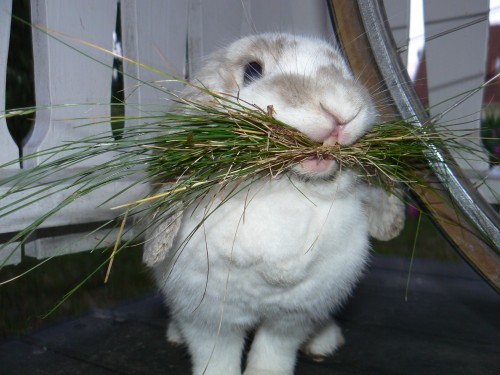
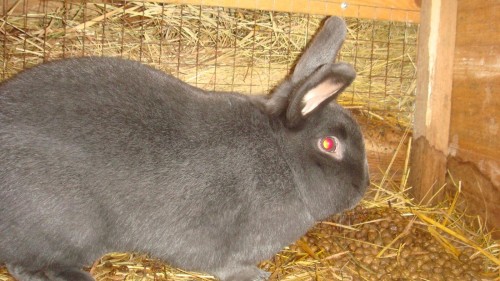
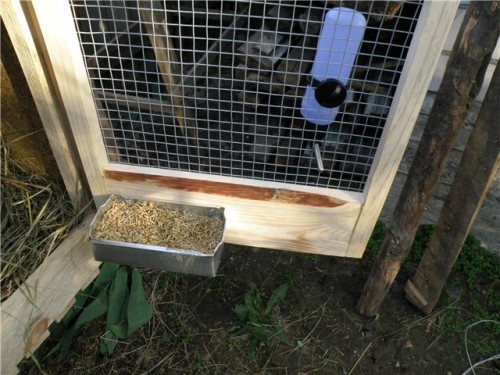
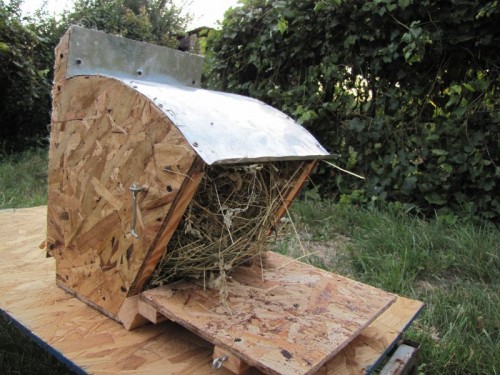

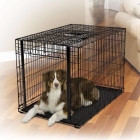
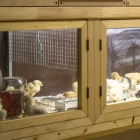
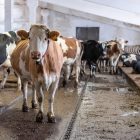
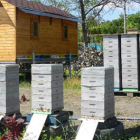
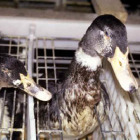
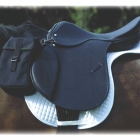
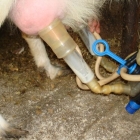
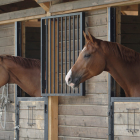
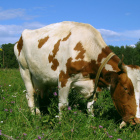
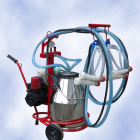
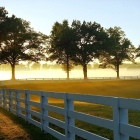
 Start a discussion ...
Start a discussion ...